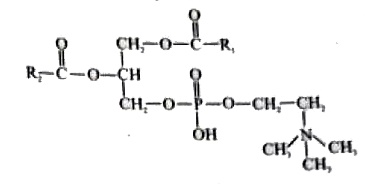Consider the Born- Haber cycle for the formation of an ionic compound given below and identify the compound (Z) formed.

A
MX
B
C
D
Video Solution
Text Solution
The correct Answer is:C
The energy released when the requisite number of positive and negative ions are condensed into crystal to form one mole of the compound is called lattice energy Lattice energy.
|
Topper's Solved these Questions
- THERMODYNAMICS AND THERMOCHEMISTRY BOOK - ERRORLESS CHAPTER - THERMODYNAMICS AND THERMOCHEMISTRY EXERCISE - ORDINARY THINKING (Objective Questions) Heat of reaction
174 Videos
- THERMODYNAMICS AND THERMOCHEMISTRY BOOK - ERRORLESS CHAPTER - THERMODYNAMICS AND THERMOCHEMISTRY EXERCISE - ORDINARY THINKING (Objective Questions) Bond energy
15 Videos
- THERMODYNAMICS AND THERMOCHEMISTRY BOOK - ERRORLESS CHAPTER - THERMODYNAMICS AND THERMOCHEMISTRY EXERCISE - JEE section (JEE (Advanced) 2018) Numeric answer type questions
2 Videos
- SOME BASIC CONCEPTS OF CHEMISTRYBOOK - ERRORLESS CHAPTER - SOME BASIC CONCEPTS OF CHEMISTRYEXERCISE - JEE Section (Matrix Match type questions)
3 Videos
Similar Questions
Knowledge Check
Consider the Born-Haber cycle for the formation of an ionic compound given below.
M(s)△H1−−→M(g)△H2−−→M+(g)
12X2(g)△H3−−→X(g)△H4−−→X−(g)△H5−−→Z
Here, Z refers toAM+X−(I)BM+X−(s)CMX2DM+X−(g)Identify the given compound:
 ALecithinBCelluloseCFatty acidDTriglyceride
ALecithinBCelluloseCFatty acidDTriglycerideBorn-Haber cycle is used to determine
AElectronegativityBLattice energyCBothDNone
Born-Haber cycle is used to determine
View SolutionBorn-Haber cycle is used to determine -
View SolutionIdentify the correct IUPAC name of compound given below

View SolutionIn the Born-Haber cycle for the formation of solid common salt (NaCl), the largest contribution comes from :
View SolutionKrebs' cycle starts with the formation of a six carbon compound by reaction between
View Solution
